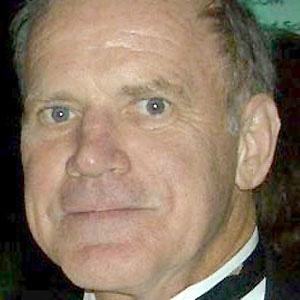Quick Facts

| Full Name | Kary Mullis |
| Occupation | Biologist |
| Date Of Birth | Dec 28, 1944(1944-12-28) |
| Age | 81 |
| Date Of Death | 2019-08-07 |
| Birthplace | Lenoir |
| Country | United States |
| Birth City | North Carolina |
| Horoscope | Sagittarius |
Kary Mullis Biography
| Name | Kary Mullis |
| Birthday | Dec 28 |
| Birth Year | 1944 |
| Place Of Birth | Lenoir |
| Home Town | North Carolina |
| Birth Country | United States |
| Birth Sign | Sagittarius |
| Spouse | Nancy Cosgrove Mullis |
Kary Mullis is one of the most popular and richest Biologist who was born on December 28, 1944 in Lenoir, North Carolina, United States. Nobel Prize winner American biochemist and writer who won simultaneously the Nobel Prize in Chemistry and the Japan Prize in 1993 for his research into the chain reaction polymerase.
He was a friend of LSD founder He was friends with LSD creator Albert Hofmann..
He was married to four times and had three children with two wives who divorced.
Kary Mullis Net Worth
| Net Worth | $5 Million |
| Source Of Income | Biologist |
| House | Living in own house. |
Kary Mullis is one of the richest Biologist from United States. According to our analysis, Wikipedia, Forbes & Business Insider, Kary Mullis 's net worth $5 Million. (Last Update: December 11, 2023)
He earned his Ph.D. in Biochemistry at his home institution, the University of California, Berkeley in 1972.
He said that LSD assisted in the development of his polymerase chain reaction which aids in amplifying particular DNA sequences.
Height, Weight & Body Measurements
Kary Mullis height Not available right now. Kary weight Not Known & body measurements will update soon.
Who is Kary Mullis Dating?
According to our records, Kary Mullis married to Nancy Cosgrove Mullis. As of December 1, 2023, Kary Mullis’s is not dating anyone.
Relationships Record : We have no records of past relationships for Kary Mullis. You may help us to build the dating records for Kary Mullis!
Facts & Trivia
Kary Ranked on the list of most popular Biologist. Also ranked in the elit list of famous people born in United States. Kary Mullis celebrates birthday on December 28 of every year.
Top Facts about Kary Mullis
- Kary Mullis was an American biochemist born in 1944.
- He won the Nobel Prize in Chemistry in 1993.
- Mullis invented the polymerase chain reaction (PCR) technique.
- PCR revolutionized DNA analysis and genetic research.
- He also authored a book on astrology and claimed to have seen aliens.
- Mullis passed away in 2019 at the age of 74.
- He held multiple degrees, including a PhD from UC Berkeley.
- Mullis worked for companies such as DuPont and Cetus Corporation.
- His invention has been used to diagnose diseases and solve crimes.
- Mullis was known for his unconventional ideas and personality quirks.
What was Kary Mullis cause of death?
Pneumonia
Why is Kary Mullis important?
Kary B. Mullis, a biochemist who won the 1993 Nobel Prize in Chemistry for discovering a way to analyze DNA easily and cheaply and thus pave the way for major advances in medical diagnostics, molecular biology and forensic science , died on Aug. 7 at his home in Newport Beach, Calif. He was 74.
What did Kary Mullis discover?
In 1985, Kary Mullis invented the process known as polymerase chain reaction (PCR) , in which a small amount of DNA can be copied in large quantities over a short period of time. By applying heat, the DNA molecule’s two strands are separated and the DNA building blocks that have been added are bonded to each strand.
How was PCR discovered?
The origins of PCR are usually attributed to Kary Mullis, a technician at the Cetus Corporation, assigned to improve the synthesis of oligonucleotides. He relates that he envisioned the concept PCR while on a camping trip with his girlfriend as part of his 1969 Nobel Prize lecture: [4]:
What does a PCR test tell you?
PCR means polymerase chain reaction. It’s a test to detect genetic material from a specific organism, such as a virus. The test detects the presence of a virus if you have the virus at the time of the test. The test could also detect fragments of the virus even after you are no longer infected.